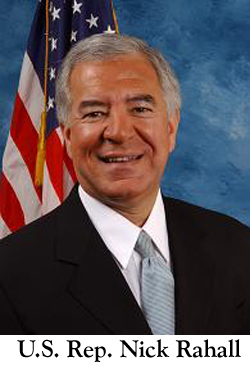 I wonder whether Mary ever considered the possibility that Democrats might be running Congress during her stint as director of the National Park Service? I mean, back when she was nominated and confirmed the November election was still almost two months off. Sure, even then the tea leaves didn't look good for the GOP, but Karl was sounding awfully confident.
I wonder whether Mary ever considered the possibility that Democrats might be running Congress during her stint as director of the National Park Service? I mean, back when she was nominated and confirmed the November election was still almost two months off. Sure, even then the tea leaves didn't look good for the GOP, but Karl was sounding awfully confident.
No matter, it is what it is. And for Mary, that means appearing before congressional committees that likely will be, shall we say, a bit more probing and demanding than those run by the Republicans. For a glimpse at what might be, here's what Rep. Nick Rahall, D-West Virginia, the incoming chair of the House Resources Committee, has to say about what he expects from the Park Service:
"For nearly a century, the National Park Service has sought to conserve our country's significant natural, cultural and historic areas. Places such as the Grand Canyon, Gettysburg, or the ancient pueblo dwellings of Mesa Verde are all eloquent characters in our American story. These sites are meant to be managed by the National Park Service in a way that will provide enjoyment, yet leave them unimpaired for future generations. Achievement of these goals requires balance, vigorous public participation, common sense, and humility in the face of the challenge before us. But consistent underfunding and misplaced management priorities have left park infrastructure crumbling and park resources degraded. There are even instances, such as the management of bison at Yellowstone National Park, where current policies are causing the destruction of an American icon. We must commit to careful review of park proposals to ensure that they are consistent with the overriding mission of the National Park Service, and conduct oversight of decisions made by the Administration to ensure sound stewardship of our natural and cultural heritage."
Kinda makes you want to reserve a front row seat with a box of popcorn, no?
Of course, talk is cheap. Last April we heard the requisite concern voiced over the plight of the national parks and little seemingly was done. So while Rep. Rahall's words sound promising, let's wait to see his actions before applauding too loudly.



Comments